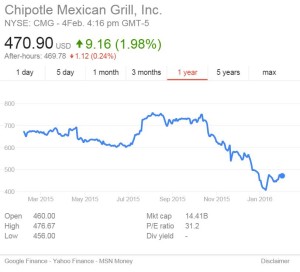Here are some recent additions to my ever-growing collection of industry-funded food and nutrition studies or commentaries with results favorable to the sponsor’s interests. These bring the total since last March to 110 with favorable results versus 11 with those that must have disappointed the sponsor.
Reduced dietary intake of simple sugars alters perceived sweet taste intensity but not perceived pleasantness. Paul M Wise, Laura Nattress, Linda J Flammer, and Gary K Beauchamp. Am J Clin Nutr 2016; 103:50-60. doi:10.3945/ajcn.115.112300
- Conclusions: This experiment provides empirical evidence that changes in consumption of simple sugars influence perceived sweet taste intensity. More work is needed to determine whether sugar intake ultimately shifts preferences for sweet foods and beverages.
- Supported by PepsiCo Inc. and Monell Chemical Senses Center institutional funds.
- Comment: This study shows that if you eat less sugar, even low-sugar foods taste sweet. Soft drink companies are under pressure to reduce sugar. If these results are correct, soda companies ought to be able to get away with reducing their sugar content—at least if customers get used to consuming less sugar and accept drinks that are not so intensely sweet.
Consuming yellow pea fiber reduces voluntary energy intake and body fat in overweight/obese adults in a 12-week randomized controlled trial. Jennifer E. Lambertemail, Jill A. Parnellemail, Jasmine M. Tunnicliffe, Jay Han, Troy Sturzenegger, Raylene A. Reimer. Clinical Nutrition, Article in press published online January 11, 2016. DOI: http://dx.doi.org/10.1016/j.clnu.2015.12.016
- Conclusions: In the absence of other lifestyle changes, incorporating 15 g/day yellow pea fiber may yield small but significant metabolic benefits and aid in obesity management.
- Funding: The study was funded by Alberta Innovates Bio Solutions, Alberta Innovates Health Solutions and Alberta Pulse Growers Commission.
Effect of flavored milk vs plain milk on total milk intake and nutrient provision in children. Flavia Fayet-Moore. Nutrition Reviews Jan;74(1):1-17. doi: Here’10.1093/nutrit/nuv031. Epub 2015 Nov 3.
- Conclusions: There is no association between flavored milk intake and weight status among normal-weight children, and some contradictory effects of flavored milk intake have been observed in subgroups of overweight children. Flavored milk is a palatable beverage choice that helps children to meet calcium targets.
- Financial disclosures. The author received a research grant from Nestlé Australia Ltd to conduct.
Does milk consumption contribute to cardiometabolic health and overall diet quality? Lamarche B, Givens I, Soedamah-Muthu S, Krauss RM, Jakobsen MU, Bischoff-Ferrari HA, Pan A, Després J-P, Canadian Journal of Cardiology (2016), doi: 10.1016/j.cjca.2015.12.033.
- Conclusion: The evidence to date suggests a neutral effect of milk intake per se on several health-related outcomes. The possibility that milk intake is simply a marker of higher nutritional quality diets cannot be ruled out and needs to be further examined in future studies.
- Authors’ disclosures (in supplementary online material): BL is Chair of Nutrition at Laval University, which Board of Directors include a representative from Provigo-Loblaws. BL has received funding from Agri-food and Agriculture Canada, the Dairy Farmers of Canada (DFC), Dairy Australia and Dairy Research Institute to study dairy and health. He serves as the Chair of the independent, peer-review Expert Scientific Advisory Council of DFC. BL has also received honoraria from DFC as invited speaker in various conferences. MUJ has received honoraria from the Global Dairy Platform to review the observational epidemiological evidence of associations between intake of trans fatty acids and risk of CHD and from the European Milk Forum as an invited speaker at symposia. IG is Chair of Food Chain Nutrition at the University of Reading. He has received funding from the UK Dairy Council, AHDB Dairy, the Barham Benevolent Trust and the UK Medical Research Council for studies on dairy and health. He has also received honoraria from the Dairy Council as an invited speaker at various conferences. He serves on various committees including being the Deputy Chair of the UK Food Standards Agency committee concerned with food chain related aspects of food safety. SSSM previously received unrestricted research grants from Global Dairy Platform, Dairy Research Institute and Dairy Australia for projects related to dairy effects on lipoproteins and mortality. RMK has received grant support from Dairy Management, Inc. Other authors have no disclosures related to the content of this paper.
Including “Added Sugars” on the Nutrition Facts Panel: How Consumers Perceive the Proposed Change. Idamarie Laquatra, Kris Sollid, Marianne Smith Edge, Jason Pelzel, John Turner. Published Online: June 09, 2015. DOI: http://dx.doi.org/10.1016/j.jand.2015.04.017|
- Conclusion: In this analysis, rather than improving consumer understanding about the amount of total sugars in a product, NFPs with “Added Sugars” declarations were misleading and the resulting misperception influenced purchase intent.
- Statement of potential conflict of interest: No potential conflict of interest was reported by the authors.
- Funding support: This research was commissioned and funded by the International Food Information Council Foundation and conducted by Turner Research Network of Atlanta, GA. More details about the International Food Information Council Foundation can be found at http://www.foodinsight.org/pages/faqs.
- Comment: IFIC is funded by food and beverage companies (see SourceWatch). The FDA is currently considering putting a line for Added Sugars on food labels. Food companies, understandably, oppose this idea.





